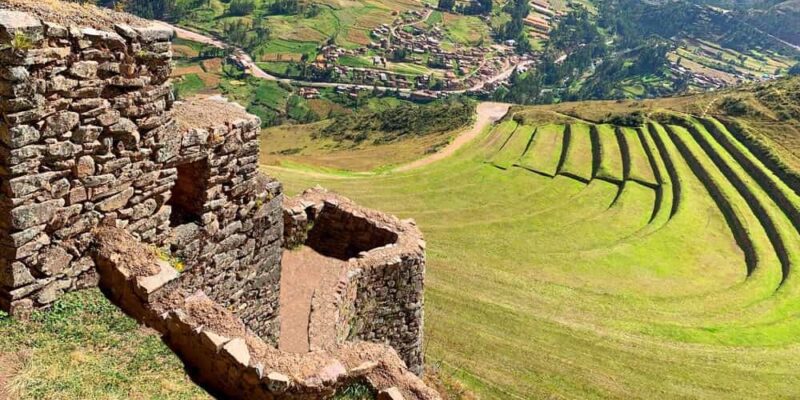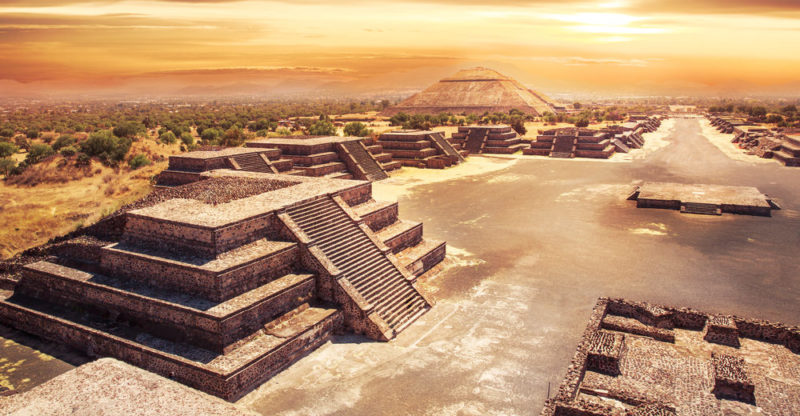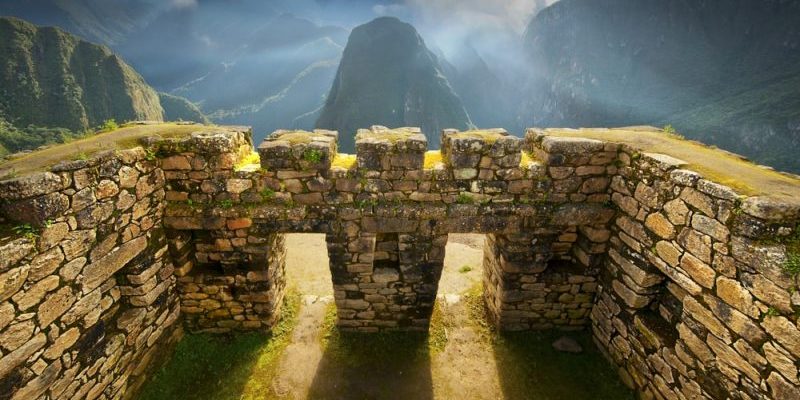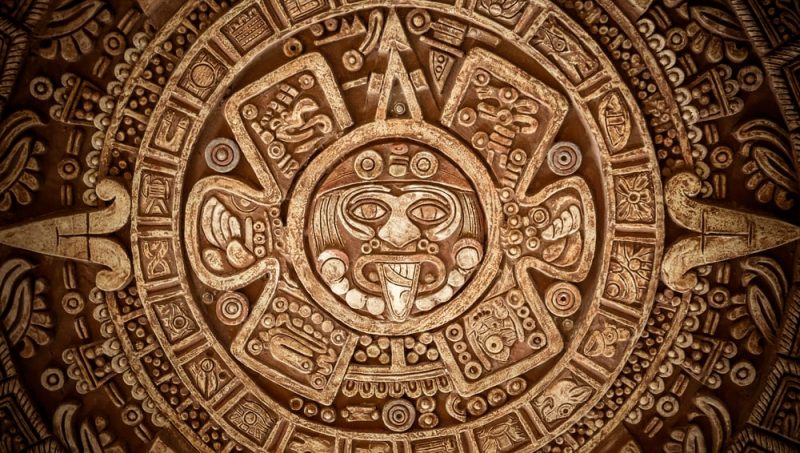We explain everything about pre-Columbian cultures, their characteristics and civilizations. In addition, its political organization, architecture and contributions.
What were the pre-Columbian cultures?
Pre-Columbian cultures were those that inhabited the American continent until the European invasion took place with the arrival of Christopher Columbus on October 12, 1492, who established the first Spanish colony in America.
There were several cultures that inhabited pre-Columbian America and the most outstanding were those that managed to become civilizations, such as the Aztec , the Mayan and the Inca . Most of them extended to the Mesoamerican region that includes the current territories of Mexico and Central America .
Pre-Columbian civilizations stood out for their level of evolution in organized societies under the rule of empires , with great monuments, temples and houses. They were characterized by using a political, economic, religious and social system, in addition to having sophisticated knowledge in astronomy , architecture , mathematics and agriculture.
The term “pre-Columbian” is ambiguous: on the one hand, it refers to the indigenous peoples of America without referring to the diversity of sophisticated cultures and, on the other hand, it invokes a single European explorer in particular.
The original peoples of America reached their splendor before and long after the arrival of the European invaders. For this reason, in addition to "pre-Columbian" terms such as: pre-Hispanic, pre-Cortesian or ancient American civilizations are often used.
Characteristics of pre-Columbian cultures

Pre-Columbian cultures were diverse, however, they had the following characteristics in common:
- Knowledge in agriculture. The practice and evolution of agricultural techniques around 1500 BC. C. allowed the nomadic peoples to acquire a sedentary life. Thus they managed to settle into more complex societies.
- Centralized political regime . Each population had its own political organization made up of a city-state with a leader or ruling king whose position was assumed by the blood lineage.
- Economic system. The development of agriculture made it possible to supply the city and, in addition, to trade with neighboring populations. The trading system fueled the growth of the main cities, which later incorporated handicrafts and hunting and gathering products into trade.
- Social class system . The king, together with the nobility and the priesthood, made up a minority that had power and governed a people made up of commoners, peasants and slaves, who were the majority of the population.
- Worship of the gods . Religious beliefs were different from one culture to another, but they all agreed to be polytheistic, that is, they worshiped various gods. Ritual and sacrificial practices were common to satisfy the gods who controlled various phenomena of nature, such as rains and crops.
- Knowledge in architecture . The organization in society evolved in an accelerated way until the construction of capital cities with great pyramids and religious buildings, between 1200 and 900 a. C. The first architectural advances were evidenced in the region of the southern coast of the Gulf of Mexico.
- Ball game. It was a ritual practiced by the Olmecs and that lasted until the Aztecs. It consisted of a game made up of two teams and a heavy, hard rubber ball that they had to put into a hoop.
Main pre-Columbian cultures

The main pre-Columbian cultures were:
- The Olmecs . They formed the first great civilization between 1500 a. C. and 300 d. They stood out for the construction of the colossal heads carved in stone, the calendar and for establishing the first indications of a writing system . They settled mainly on the coast of the Gulf of Mexico, in the lower part of the current territories of Veracruz and Tabasco.
- The Aztecs or Mexica. They stood out for the construction of great palaces, temples and markets. Through military alliances and confrontations they managed to expand their territory and power, until the culmination of their empire after the death of the chief Moctezuma II. The weakened government made vulnerable the civilization that was submitted by the Spanish Hernán Cortés in 1521. They settled in the southern part of the current territory of Mexico .
- The Mayans . They stood out for achieving great knowledge of mathematics, astronomy and writing. It is estimated that they remained as a consolidated culture between 300 BC. C. and 900 d. C. and they reached their maximum splendor around 600 d. C. They settled in the Yucatan peninsula, Mexico, and in the jungles of Petén, Guatemala.
- The Incas . They stood out for their extensive military and war knowledge, which allowed them to become the civilization with the largest territorial extension in America. It was the last of the great pre-Columbian civilizations, until its invasion in 1532 by the Spanish. They settled in the western part of South America on the mountain chain of the Andes , in the current territories of Ecuador , Peru , Bolivia , northern Argentina and Chile .
Pre-Columbian political organization

According to the main pre-Columbian cultures, the political and social organization was organized as follows:
- Aztecs. They were based on a monarchical government system , although it was not transmitted by blood lineage, but the position was appointed by a supreme council represented by the nobility, which comprised a minority of the population. They stood out for a great military deployment that allowed them to conquer more territories and exercise power over the peasants, commoners and slaves, that is, over the majority of the population.
- Mayans. They were based on a monarchical and theocratic government system , that is, it was centered on God, so the priests were part of the ruling nobility, along with the king who assumed office by inheritance or blood lineage. Their social organization was organized in several independent states, with their own rulers, who had to respect the word of the king.
- Incas. They were based on an absolutist and theocratic monarchy in which the king represented the son of the sun god and the nobility concentrated military, civil and religious power. It was characterized by the political unity between its three main cities: Tenochtitlan, Texcoco and Tlacopan, known as "the triple alliance."
Architecture of pre-Columbian cultures

Among the main architectural works of the great pre-Columbian cultures, the following stand out:
- The archaeological zone of San Lorenzo , which consists of a complex built by the Olmecs and in which dozens of stone sculptures have been found.
- The Chichen Itzá temple , built by the Mayans.
- The circular-based pyramid built by the Aztecs, Calixtlahuaca , one of the few temples with that particular structure.
- The city of Machu Picchu , which was built by the Incas on the heights of the Andes mountains and which has a system of bridges and canals.
Contributions of pre-Columbian cultures

Among the main contributions of pre-Columbian cultures are:
- The calendar. The Olmecs created the first calendar that consisted of 260 days. Later it was perfected by other cultures, especially the Mayans.
- The writing system. The Olmecs laid the foundations for future writing systems that the successor peoples developed.
- The architecture. The pyramids and the construction of temples were unprecedented constructions in the history of mankind and were a representative symbol of the great pre-Columbian civilizations.
- The sciences . The Mayans reached extensive knowledge of mathematics, such as the vigesimal system, and astronomy with the improvements in the solar calendar.
- Medicine. The Aztecs reached extensive knowledge about the medicinal attributes of plants and their extracts, in addition to studying the human body . That allowed them to heal various diseases.
Pre-Columbian art
Pre-Columbian art was varied, in part, due to the various materials and tools available in the environment, depending on the regions in which the different cultures lived. What the art of pre-Columbian cultures has in common is the representation of nature and the veneration of the gods .
It was characterized by the figures made in terracotta clay that used to represent women and alluded to the fertility rites . These figures, among others, were also embodied in temples and pyramids. In addition, they used to represent images of war and sacrifices before the gods.
They developed skills to work metals, such as gold , sculptures carved in stone, such as the colossal Olmec heads, or statues of humans perched on animals. In addition, they made utensils such as tables for grinding grains, ceramic containers and vessels, and pottery objects.
The murals painted inside the temples were one of the most important works of pre-Columbian culture, characterized by the use of sober and bright colors to highlight jewelry, accessories and other metal objects.
The above content published at Collaborative Research Group is for informational and educational purposes only and has been developed by referring to reliable sources and recommendations from technology experts. We do not have any contact with official entities nor do we intend to replace the information that they emit.
MA student of the TransAtlantic Masters program at UNC-Chapel Hill. Political Science with a focus on European Studies. Expressed ideas are open to revision. He not only covers Technical articles but also has skills in the fields of SEO, graphics, web development and coding. .
Leave a reply
Your email address will not be published. Required fields are marked *Recent post

Sport: What Is It, Types, Risks, Features, Characteristics and Examples

Dogs: Emergence, Features, Characteristics, Feeding and Breeds

Story: Definition, Elements, Structure, Features and Characteristics

